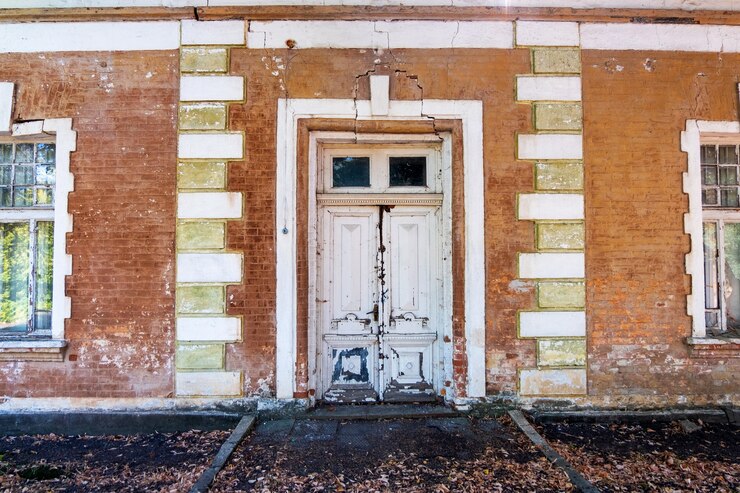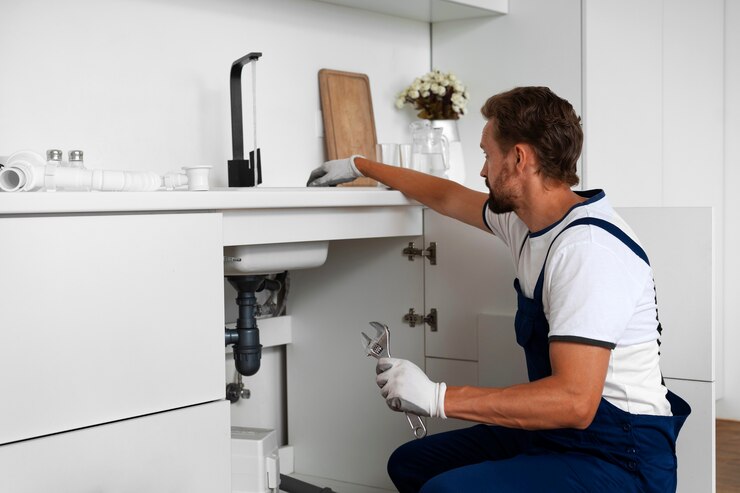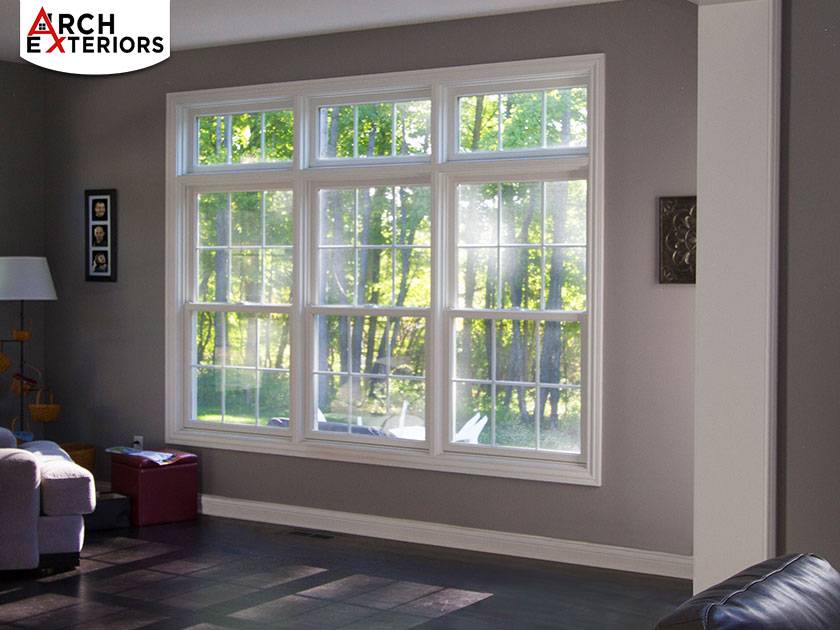Home insurance does not typically cover rotted wood. However, it may provide coverage for related damage caused by the rot, such as water leaks or pests.
If you have specific questions about what your home insurance policy covers, it is best to review your policy documents or contact your insurance provider directly. It can be important to understand what is and is not covered by your policy to ensure you have the proper coverage in place to protect your home and belongings.
Taking proactive measures to prevent wood rot, such as regular maintenance and repairs, can also help mitigate potential risks and damage.

What Causes Rotted Wood In Homes?
Rotted wood in homes can be caused by factors such as water damage, pests, or poor maintenance. However, home insurance typically does not cover rotted wood as it is considered a maintenance issue.
Moisture And Humidity Levels:
- Excessive moisture and high humidity levels within a home can lead to the rotting of wood. Here are some key points to consider:
- Excess moisture can accumulate in areas such as bathrooms, kitchens, basements, and attics, creating a favorable environment for wood rot.
- Leaking pipes, plumbing issues, or faulty roof systems can introduce water into the structure, causing wood to deteriorate.
- Poorly designed or maintained gutters and downspouts may result in water pooling around the foundation, promoting wood rot.
- Condensation on windows, walls, or ceilings can contribute to elevated moisture levels, accelerating the decay of wooden surfaces.
Pest Infestations:
- Wood-boring insects and termites can cause significant damage to the structural integrity of a home. Consider the following:
- Termites, carpenter ants, and powderpost beetles are common wood-destroying pests that can infest and compromise wood.
- These insects typically target damp, decaying, or untreated wood found in areas with high moisture levels.
- Regular inspection and appropriate pest control measures are essential in preventing and addressing wood-infesting insect problems.
Lack Of Proper Ventilation:
- Inadequate ventilation can contribute to the rotting of wood within a home. Here are a few points to keep in mind:
- Insufficient airflow can trap moisture, causing wood to become damp and susceptible to rot.
- Poorly ventilated crawl spaces, basements, and attics can create stagnant air, promoting the growth of mold and mildew that can degrade wood.
- Lack of ventilation in bathrooms, kitchens, and laundry areas can lead to moisture accumulation, increasing the chances of wood decay.
- Properly installing and maintaining ventilation systems, such as exhaust fans and vents, can help prevent wood rot by promoting air circulation.
Remember, identifying the causes of rotted wood in homes is vital for understanding what insurance coverage may apply. By addressing issues related to moisture, pest infestations, and ventilation, homeowners can proactively protect their properties and minimize the risk of wood decay.
The Extent Of Damage Rotted Wood Can Cause
Home insurance coverage for rotted wood damage is variable and depends on the source of the rot. While some policies may cover water damage leading to wood rot, others may exclude maintenance-related issues. It is essential to review your policy and communicate with your insurance provider for clarity.
Rotted wood may seem like a minor issue, but its consequences can be more significant than you might think. While it’s unfortunate that home insurance may not cover the cost of repairing rotted wood, understanding the extent of the damage it can cause is essential.
In this section, we will explore the impact of rotted wood on structural integrity, mold and mildew growth, and the increased risk of pest infestations.

Structural Integrity:
- Rotted wood can compromise the structural integrity of your home, particularly if it affects load-bearing elements such as beams, joists, or columns.
- The decay weakens the wood, making it more susceptible to breakage under pressure or stress.
- This can lead to sagging floors, cracked walls, or even complete structural failure in severe cases.
- It is crucial to address rotted wood promptly to prevent further deterioration and ensure the safety of your home.
Mold And Mildew Growth:
- Rotted wood provides an ideal environment for mold and mildew to thrive.
- The moisture trapped in decaying wood creates a perfect breeding ground for these fungi.
- Mold and mildew not only consume the organic matter but can also release spores that can spread throughout your home, contributing to poor indoor air quality.
- Exposure to mold spores can trigger allergies or respiratory problems, especially in individuals with existing sensitivities or compromised immune systems.
Increased Risk Of Pest Infestations:
- Rotted wood attracts pests such as termites, carpenter ants, or wood-boring beetles.
- These insects are drawn to the soft, decayed wood, where they create nests and tunnels.
- Infestations can spread rapidly, causing further damage to the wooden structures of your home.
- Over time, this can weaken the overall integrity of your property and require extensive repairs.
To prevent these significant consequences, it is crucial to address and repair rotted wood as soon as it is detected. Regular inspections, proper maintenance, and timely repairs can help protect your home from the damaging effects of rotted wood.
Determining Coverage For Rotted Wood Damage
Determining coverage for rotted wood damage is crucial; it’s important to understand if home insurance covers such incidents. Reviewing your policy carefully is necessary to determine if it includes coverage for rotted wood and the specific conditions that may apply.
Wood damage due to rot can be a common issue for homeowners, leading to concerns about whether home insurance will cover the repairs. To understand the coverage for rotted wood damage, it’s essential to review the insurance policy terms and conditions, identify covered perils for wood damage, and assess the age and condition of the wood.
Reviewing Insurance Policy Terms And Conditions:
- Carefully read through your home insurance policy to understand the specific terms and conditions related to rotted wood damage coverage.
- Look for sections that outline coverage for structural damage, decay, or deterioration.
- Pay attention to any exclusions or limitations mentioned in the policy, as these might impact the coverage for rotted wood.
Identifying Covered Perils For Wood Damage:
- Check if your insurance policy covers the specific perils that contribute to rotting wood, such as water damage or infestation by termites or other pests.
- Look for terms like “sudden and accidental water damage” or “vermin or insect infestation” in your policy to determine coverage eligibility.
- It’s crucial to understand what perils are covered and what might be excluded in terms of wood damage.
Assessing The Age And Condition Of The Wood:
- Insurance policies often consider the age and condition of the wood when determining coverage.
- Some policies exclude coverage for damage caused by wood that was already in poor condition or previous rotting.
- Document the age and condition of the affected wood, including any pre-existing damage, to provide evidence while filing a claim.
Remember, every home insurance policy is different, so it’s essential to review your specific terms and conditions. If you’re unsure about the coverage for rotted wood damage, reach out to your insurance provider for clarification. Keep in mind that maintaining your home’s wood structures and promptly addressing any signs of damage can help prevent rot and reduce the likelihood of insurance claims.
Coverage Limits And Exclusions For Rotted Wood
Home insurance coverage for rotted wood depends on the policy’s coverage limits and exclusions. It’s essential to review your policy to determine if it covers repairs or replacements for rot-related damages.
Rotted wood can be a common issue in homes, caused by factors like moisture, insects, or simply age. If you’re experiencing this problem, you may be wondering if your home insurance policy covers the cost of repairs or replacement. Let’s delve into the coverage limits and exclusions for rotted wood to help you understand what to expect.
Common Exclusions In Home Insurance Policies:
- Wear and tear: Most home insurance policies exclude coverage for rot and decay resulting from normal wear and tear. Insurance is typically designed to protect against sudden and accidental damage rather than gradual deterioration.
- Poor maintenance: If your home has suffered from rot due to neglect or improper maintenance, insurance companies may deny your claim. It’s essential to take regular care of your property to prevent rot and show evidence of proper upkeep if necessary.
- Water damage: While water damage caused by a sudden burst pipe or a severe storm may be covered, damage resulting from chronic leaks or long-term exposure to moisture is often excluded. Insurance companies expect homeowners to address and mitigate small leaks promptly.
Deductibles And Coverage Limits:
- Deductibles: Like most insurance policies, home insurance often has a deductible, which is the amount you must pay toward a claim before your coverage kicks in. Depending on your policy, you may need to pay this deductible for repairs related to rotted wood.
- Coverage limits: Home insurance policies usually have specific coverage limits for different types of damage. Make sure you review your policy to understand the maximum amount the insurance company will pay for repairs or replacement of rotted wood. It’s essential to assess whether these limits are adequate for the extent of the damage.
Separate Coverage Options For Rotted Wood:
- Optional endorsements: Some insurance companies offer optional endorsements or add-ons to provide coverage for rotted wood. These endorsements may include coverage for rot resulting from different causes, such as insect infestation, fungal growth, or general decay. Check with your insurance provider to see if they offer any specialized endorsements for rot-related issues.
- Home warranty or maintenance plans: Alternatively, you may consider a home warranty or maintenance plan that specifically covers repairs related to rot and decay. These plans can offer comprehensive coverage for a range of home maintenance issues, including rotted wood. However, it’s crucial to carefully review the terms and conditions of such plans before making a decision.
Understanding the coverage limits and exclusions for rotted wood in your home insurance policy is essential. It’s advisable to review and assess your policy regularly to ensure you have the necessary coverage or explore additional options if needed.
Inspecting And Maintaining Wood Structures
Home insurance usually doesn’t cover rotted wood, so it’s important to inspect and maintain wood structures regularly to prevent damage and potential insurance claims. Regular maintenance can save you time and money in the long run.
Wood is a common building material used in many homes, providing a natural and aesthetic appeal. However, over time, wood structures can be subject to damage, including rot. If you’re wondering whether home insurance covers rotted wood, the answer can vary depending on your policy and the specific circumstances.
In order to minimize the risk of rot and potential insurance complications, it’s important to regularly inspect and maintain your wood structures. Here are some key points to consider:
Regular Inspections And Maintenance Routines:
- Conduct regular inspections of all wooden structures in your home, including decks, fences, and siding.
- Look for signs of rot, such as discoloration, softness, or an unpleasant odor.
- Check for any areas where water may be penetrating the wood, such as around windows or joints.
- Create a maintenance routine to address any minor issues before they become major problems.
Properly Sealing And Weatherproofing Wood:
- Apply a sealant or paint specifically designed for wood to protect it from moisture.
- Ensure all ends and edges of wooden structures are properly sealed to prevent water infiltration.
- Consider using weather-resistant materials, such as pressure-treated wood or composites, for areas susceptible to moisture.
Promptly Addressing Any Signs Of Rot Or Damage:
- If you discover any signs of rot or damage during your inspections, it’s important to act promptly.
- Remove any affected wood and replace it with new, healthy wood.
- Treat the surrounding area with a wood preservative to prevent future rot.
- Determine the cause of the rot, such as water damage or a leak, and repair it to prevent further issues.
Regular inspections and maintenance routines, proper sealing and weatherproofing, and promptly addressing any signs of rot or damage are essential to preserving the integrity of your wood structures. By taking these proactive steps, you can potentially avoid the need to make a home insurance claim for rotted wood.
Remember, prevention is key when it comes to maintaining your home’s wooden elements.
Insurance Policy Add-Ons For Rotted Wood Protection
Protect your home from rotted wood with insurance policy add-ons. Find out if your home insurance covers rotted wood and learn about additional protection options.
Home insurance is designed to protect homeowners from unexpected events and damages that may occur to their property. However, when it comes to rotted wood, homeowners often wonder if their insurance policy covers this type of damage. In this blog post, we will explore the various insurance policy add-ons that can provide coverage for rotted wood, including endorsements and riders.
By understanding these additional coverage options, homeowners can ensure they have the necessary protection in place to address any wood rot issues that may arise.
Additional Coverage Options For Wood Rot:
- Dwelling protection: Some insurance policies offer coverage for damage caused by fungi, including wood rot. This coverage may extend to repairing or replacing rotted wood in the insured property’s structure.
- Personal property coverage: In addition to covering the dwelling, insurance policies may also provide coverage for personal property damaged by wood rot. This can include furniture, appliances, or any other items affected by the rot.
- Additional living expenses: If wood rot damage forces you to temporarily move out while repairs are being made, additional living expenses coverage can help cover the costs of alternative accommodations, meals, and other necessary expenses.
- Water damage endorsement: Rotted wood is often a result of prolonged exposure to moisture. Adding a water damage endorsement to your policy can help cover the costs associated with repairing or replacing rotted wood caused by water damage.
- Scheduled personal property endorsement: If you have valuable items that could be damaged by wood rot, such as antique furniture or art pieces, you may want to consider adding a scheduled personal property endorsement. This endorsement provides additional coverage for specific items that are not adequately covered under the standard policy.
Considering Endorsements Or Riders To Supplement Coverage:
- Assess your risk: Evaluate the likelihood of wood rot occurring in your property. If you live in an area prone to high humidity or have a history of water-related issues, it may be wise to consider adding an endorsement specifically for wood rot coverage.
- Consult with your insurance provider: Reach out to your insurance provider to discuss available options for adding coverage for wood rot. They can guide you in understanding the specific endorsements or riders they offer and help you choose the ones that make the most sense for your needs.
- Compare policy costs and coverage: When considering additional coverage options, it’s essential to compare the costs and coverage limits across different insurance providers. This will enable you to make an informed decision while ensuring you get the best value for your money.
Reviewing And Updating Insurance Policies Regularly:
- Annual policy review: Regularly reviewing your insurance policy is vital to ensure you have the appropriate coverage, including protection against wood rot damage. Life circumstances, changes in property value, or renovation projects may require adjustments to your coverage.
- Stay informed about policy changes: Insurance policies may undergo updates or changes in coverage options over time. Staying informed about policy changes will help you identify any new coverage options available for wood rot or other damages.
- Open communication with your insurance provider: Keep an open line of communication with your insurance provider and inform them of any changes or upgrades you make to your property. They can provide insights into how these changes may impact your coverage and recommend any necessary adjustments.
By understanding the additional coverage options for rotted wood and regularly reviewing and updating your insurance policy, you can ensure that you are adequately protected against potential damages. Consult with your insurance provider to explore the best options available for your specific needs and enjoy the peace of mind that comes with comprehensive coverage for wood rot.
Hiring Professionals For Rotted Wood Repair
Hire professionals for rotted wood repair as home insurance usually does not cover this issue. Get expert help to ensure your home is safe and well-maintained.
One common issue that homeowners may encounter is rotted wood. Whether it’s due to moisture damage or pest infestations, rotted wood can have a negative impact on the structural integrity and aesthetics of a home. Fortunately, there are professionals available who specialize in repairing rotted wood.
Hiring experienced contractors ensures that the problem is addressed effectively and efficiently. Here are some key steps to follow when hiring professionals for rotted wood repair:
Finding Qualified Contractors
- Start by doing thorough research to find qualified contractors who specialize in rotted wood repair.
- Seek recommendations from friends, family, and neighbors who have had similar repair work done.
- Check online directories, such as professional association websites or review platforms, to find highly rated contractors in your area.
- Look for contractors with relevant experience, proper licenses, and insurance to ensure the work is done safely and professionally.
- Consider reading customer reviews and testimonials to get an idea of the contractors’ reputation and quality of work.

Obtaining Cost Estimates And Quotes
- Contact multiple contractors to obtain cost estimates and quotes for the rotted wood repair.
- Provide each contractor with detailed information about the extent of the damage, including measurements and photos if possible.
- Ask for a breakdown of the costs involved, including materials, labor, and any additional fees.
- Request a written estimate that clearly outlines the scope of work to be performed and the associated costs.
- Compare the estimates and quotes from different contractors to make an informed decision.
Ensuring Proper Permits And Documentation
- Check with your local authorities to determine if any permits are required for the rotted wood repair.
- Verify if the contractor will handle the permit application process or if you need to obtain them yourself.
- Request copies of licenses, insurance certificates, and any other necessary documentation from the contractor.
- Ensure that all paperwork is in order before proceeding with the rotted wood repair.
- Keep records of all documentation related to the project for future reference.
By following these steps, you can hire professionals who are qualified, reliable, and capable of repairing rotted wood effectively. Remember to prioritize finding contractors with the right expertise and ensuring all necessary paperwork and permits are in place. With the help of professionals, your home can regain its structural integrity and be protected from further damage.
Diy Options For Rotted Wood Restoration
Looking for diy options to restore rotted wood? Find out if your home insurance covers rotted wood and explore effective techniques to save and restore your wood without breaking the bank. Bring new life to your home with these budget-friendly solutions.
Rotted wood can be a common problem in homes, especially in areas with high humidity or inadequate ventilation. If you’ve discovered rot in your home, you may be wondering if it’s covered by your home insurance. Unfortunately, the answer isn’t always straightforward.
While some insurance policies may cover rotted wood caused by a sudden or accidental event like a plumbing leak, others may not provide coverage for general wear and tear or neglect.
Assessing the feasibility and complexity of repairs:
- Carefully inspect the rotted wood to determine the extent of the damage. Is it localized to a small area or does it span a larger section?
- Consider the feasibility of repairs based on your own skills and experience. Minor rot issues can often be tackled by homeowners, while more extensive damage may require professional assistance.
- Take into account the complexity of the repairs. Are there underlying structural issues that need to be addressed? Will the rot impact the integrity of the surrounding materials?
Using appropriate tools and materials:
- Safety should always come first when working with rotted wood. Wear protective gloves, goggles, and a mask to minimize exposure to harmful chemicals or mold spores.
- Remove any loose or rotten wood using a chisel, pry bar, or reciprocating saw. Take care not to damage surrounding intact wood.
- Treat the remaining wood with a wood hardener or consolidant to stabilize and reinforce it.
- Use wood fillers or epoxy compounds to fill in the areas where the wood has rotted away. Sand the surface smooth once the filler has dried.
Tips and precautions for successful restoration:
- Address the underlying cause of the wood rot, such as fixing leaks or improving ventilation. Otherwise, the rot may return after you have completed the repairs.
- Regularly check for signs of moisture or deterioration in the repaired area to catch any issues early on.
- Consider applying a wood preservative or protective coating to prevent future rot.
- If you are uncertain about the extent of damage or lack confidence in your diy skills, it’s advisable to consult with a professional contractor who specializes in wood repair.
Remember, the success of your restoration efforts will depend on prompt action, proper assessment of the damage, and the use of suitable tools and materials. With careful planning and execution, you can restore rotted wood and protect the structural integrity of your home.
Frequently Asked Questions Of Does Home Insurance Cover Rotted Wood
Can Home Insurance Cover Rotted Wood?
Yes, home insurance can cover rotted wood if it is caused by a covered peril, such as a storm or a plumbing leak. However, the coverage may vary depending on your policy and the specific circumstances. It’s essential to review your policy and speak with your insurance provider to understand the coverage details.
What Causes Wood Rot In Homes?
Wood rot is primarily caused by excessive moisture, which provides a favorable environment for fungi to grow and attack the wood. Common causes include water leaks, poor ventilation, high humidity levels, and direct contact with soil or water. Regular maintenance and proper prevention measures can help to minimize the risk of wood rot.
Will Home Insurance Cover Repairs For Rotted Wood?
Generally, home insurance does not cover repairs for rotted wood caused by lack of maintenance or wear and tear. However, if the wood rot is a result of a covered peril, such as a sudden and accidental water damage, your insurance policy may provide coverage for the necessary repairs.
It’s important to check your policy for specific exclusions and limitations.
How Can I Prevent Wood Rot In My Home?
To prevent wood rot in your home, ensure proper ventilation, repair any water leaks promptly, keep the wood protected with paint or sealant, maintain a dry environment, and avoid direct contact between wood and soil or water. Regular inspections and maintenance are also crucial to identify and address any wood rot issues early on.
What Type Of Wood Is Most Resistant To Rotting?
Certain types of wood are naturally more resistant to rotting, such as cedar, redwood, and teak. These woods contain natural oils that act as a protective barrier against moisture and fungi. Pressure-treated lumber is another option as it is chemically treated to resist rotting.
However, even with resistant woods, proper maintenance is still necessary to prolong their lifespan.
Is Wood Rot Covered Under A Home Warranty?
Wood rot is typically not covered under a standard home warranty as it is considered a maintenance issue rather than a sudden breakdown of a covered component. Home warranties usually focus on major systems and appliances. It’s important to review your home warranty contract or speak with the provider directly to understand the specific coverage details related to wood rot.
Conclusion
Ensuring that your home insurance covers rotted wood is essential for any homeowner. While policies vary, many home insurance providers do not typically cover damage caused by rot or decay. However, there are certain circumstances where coverage may apply, such as if the rot is a direct result of a covered peril, like a burst pipe or storm damage.
Additionally, some insurance companies offer optional coverage for rot and decay, which can be added to your policy for an additional cost. It is important to read and understand the terms and conditions of your policy and contact your insurance provider for specific details regarding coverage for rotted wood.
Taking proactive measures to prevent wood rot, such as regular maintenance and inspections, can help protect your home and reduce the risk of costly repairs. As a homeowner, being aware of your insurance coverage and taking necessary precautions is paramount in safeguarding your investment.




